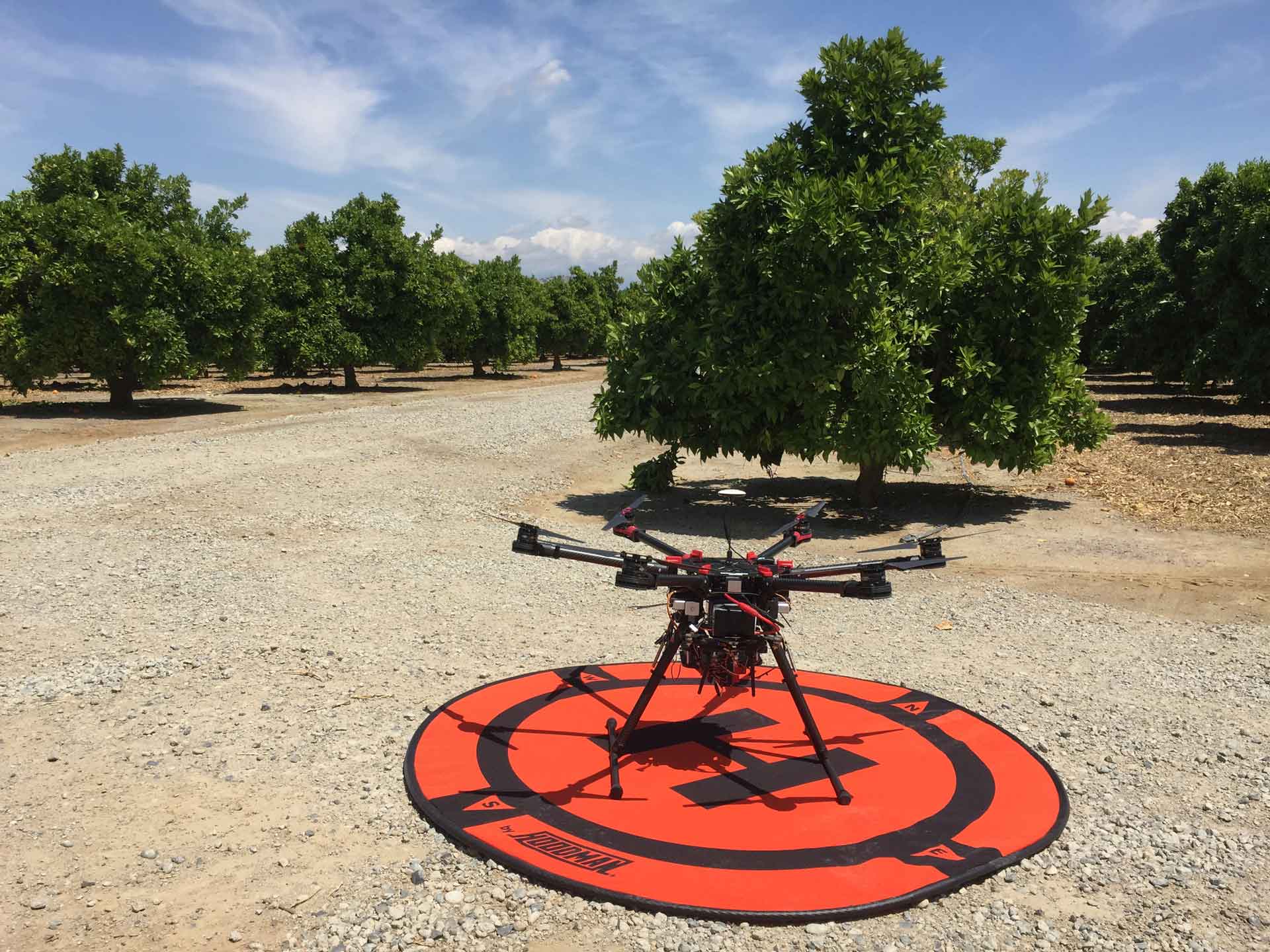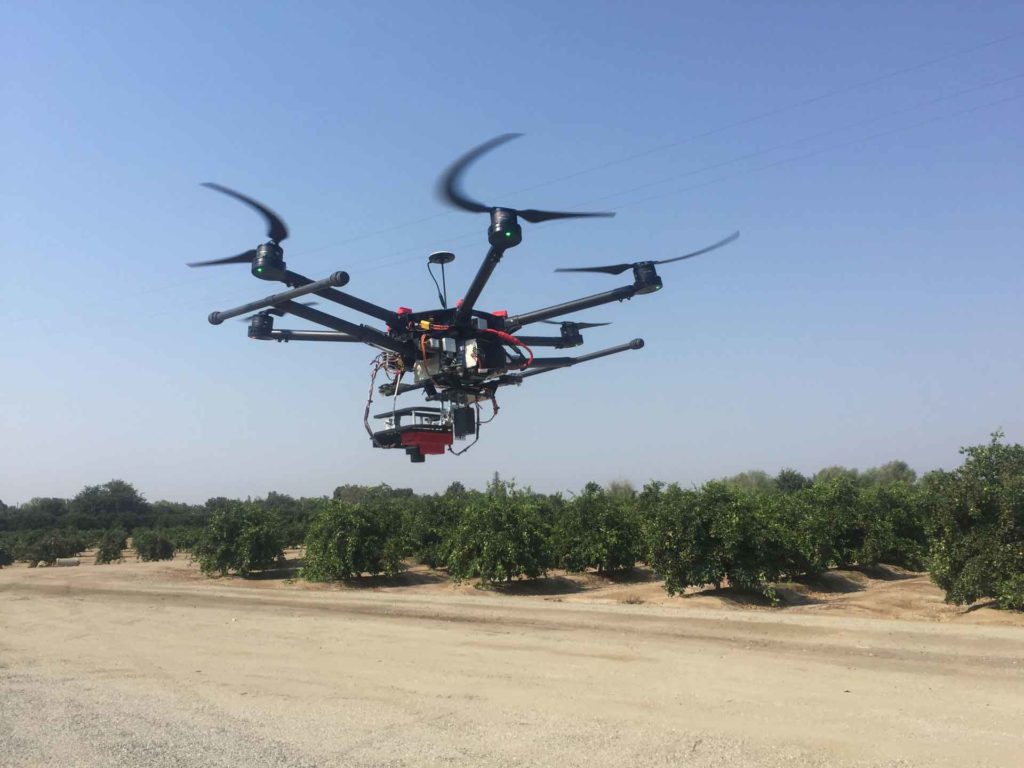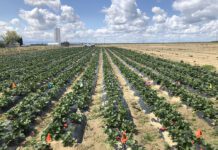Before drone technology became available farmers would have to procure images of their operations from satellite services or through the use of manned aircraft. In a relatively short period of time the cost, quality and sophistication of aerial image capture changed significantly. What began as somewhat of a novelty has grown into a full-fledged industry that continues to become more advanced every year.
While drone technology initially developed outside of the agricultural sector, it did not take long to realize that many of the features being utilized in other industries could be applied on farming operations. An increasing number of growers have been purchasing their own drones or employing drone services for a number of different applications on farms.
As the drones themselves continue to evolve, allowing for further applications and better functionality, so too does the software side of things. A common issue for growers in recent years is that with increased adoption of data collecting technology the amount of information gathered can become overwhelming and ultimately useless if not interpreted and acted upon.
Mark Hull has been working with drones for over five years now, working with farmers in their agricultural operations as well as working with drone companies in testing and development. He noted that while drones have been around for quite a while, their usage in the agriculture industry has increased considerably in recent years for a multitude of reasons.
Affordability And Ease Of Use
Cost of production is on the forefront of every grower’s mind when considering what types of new technology to adopt. Hull explained that the cost of quality drones has reached a point where the agriculture industry is more willing to try them.
“The idea of switching from manned aircraft, or satellite data, to drone data is becoming a little bit more feasible,” said Hull. “It’s very easy to become legally licensed to fly, so that’s kind of changing things.”
There are many drones on the market now that have the functionality that growers are looking for that are easy to use and within a reasonable price-point, Hull added.
“Kind of standard, what we would call consumer or maybe prosumer level drones, being used for photographing and videoing fields in natural color at any given time, documenting where things are at, where growth is at,” said Hull.
Digital waypoints have also made it easier to compare data from one flight to allow for an exact comparison between different points in time. Hull added that mapping abilities have also become more simplified.
“The ability to stitch, or map with thermal imagery, is becoming a little bit easier and little more advanced,” said Hull. “The most popular multi-spectral sensor for agriculture mapping has just made a model with a thermal camera in it.”
Using thermal imaging data can allow a grower to locate hot spots or issues with their irrigations system in real time through the deployment of a drone, saving a considerable amount of time compared to physically monitoring every row of their orchard.
Hull also said that the resources available to growers looking to hire a drone operator have progressed significantly in recent years.
“There’s websites now that you can use to search for a drone pilot,” said Hull. “Now you can actually go on these sites and submit a job request. So, you can say, ‘I want this work done, on this date, in this location,’ and you can put in a budget and people won’t respond unless they can afford to work for your budget.”
Drone technology has progressed rapidly to become more user friendly and affordable and the industry continues to innovate to better meet the needs of those interested in what they can accomplish.
Where Drone Development is Heading
One of the drone developments on the horizon is what is known as a ‘drone in a box,’ which are more autonomous than current drones on the market.
“The theory of it landing and charging and dumping the data into the box so that the operator either could be the computer, or it could be someone from somewhere else,” said Hull. “That is a technology that people are watching for.”
While that technology is technically already here, Hull said that line-of-sight regulations will need to change to allow those types of drones to be deployed. “We are kind of waiting for that. We’re seeing FAA (Federal Aviation Administration) give more and more waivers for companies to test that,” said Hull.
Improving camera resolution and quality of the imaging data that drones are capable of producing is another area Hull said will likely continue to be developed.
“What that allows us to do is either fly higher than you normally would, or just fly at any given height but get much higher resolution. We call it GSD, Ground Sampling Distance, which is just the size of the pixel,” said Hull. “So, the smaller we get that, then the easier it is to analyze where a nut is or an orange is.”
Hull noted a project he is working on involving a 100-megapixel camera and the opportunities it presents. “What that does is allows us to get much more like laser, you know, LiDAR type resolution data, so now you might be able to do even more with trees like looking at branch diameters and trunk diameter. The more information you can get, the more that you can do with it in post processing.”
There are countless companies currently working to develop drones for a multitude of uses in agriculture. One company claims that its drones can apply pollen in orchards and produce a 15 percent boost in fertility. There are also several different companies that are continuing to develop drones that are capable of efficiently and economically spraying various types of materials such as herbicides, insecticides, or fertilizers. In China, farmers are already employing drone operators using pre-programmed drones with the capability of flying without a pilot to deliver materials based on pest and disease information of individual plants.
It is uncertain just how quickly the drone industry will continue to advance and improve, but as more farmers continue to use drone technology in their operations the more the drone industry will focus on addressing agricultural issues.
Other Industries Driving Applications for Agriculture
Much of the functionality of drones and how they are applied to farming originated through the needs of other industries. Hull highlighted developments with autonomous cars as helping to push continued improvements in collision avoidance technology and vision positioning systems that have been applied to drones.
The evolution of cell phones also helped to push significant development in technologies inherent in modern drones. Hull noted that the need for smaller processing components that are necessary for GPS played a sizable role in where drone technology is today.
Other industries will keep contributing to the further advancement of drone technology, Hull added, as drone applications continue to expand in construction, delivery and distribution, as well as search and rescue. Agriculture will likely benefit as a result of additional improvement to what drones are capable of, both in terms of increased functionality as well as more affordable units to make investment more appealing to growers.
Technological breakthroughs in artificial intelligence and capacities for advanced decision-making computer processes will also become more engrained in drone capabilities as time moves on. The potential for a fully programable fleet of autonomous drones with the ability to carry out detailed monitoring, make decisions regarding orchard issues and material applications, perform the necessary actions and return to their point of origin for charging may only be a few years away
All photos courtesy of Mark Hull, All Drone Solutions

















